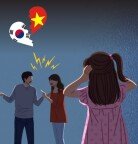Cure to end 'hereditary disease' developed by researchers
Cure to end 'hereditary disease' developed by researchers
Posted August. 03, 2017 07:27,
Updated August. 03, 2017 07:51

With his Genomic Mutation Calibration Team at the Institute for Basic Science (IBS), Professor Kim Jin-soo and researchers from Oregon Health and Science University published its findings on the international journal "Nature" that they succeeded in calibrating embryonic mutation with "CRISPR's genome-editing scissors." The CRISPR scissors allow practitioners to selectively eliminate specific genes by using the enzyme "Cas9."
Hypertrophic myocardiosis is a heart disease, which patients suffer innately thickening left ventricular wall. This disease is caused when mutation is occurred in a gene called "MYBPC3." When even one of the parents hold such mutated gene, one out of two children is likely to suffer from the same disease.
When inseminating a sperm with mutant MYBPC3 to healthy egg, the team also inserted the genome editing scissors, or Cas9. First, the Cas9 cut off the mutated part within the genes of the sperm. Then, the empty part of the sperm was filled with cloned gene information from the healthy egg. This means that the embryo self-restored without the help of an alien gene injected additionally.
In addition, the team made a breakthrough in resolving the "mosaic symptoms that hindered them from editing the genome. Here, mosaics are referred to as a state where the edited and unedited cells remain mixed inside the embryo when the genetic scissors are inserted inside the fertilized egg. All divided cells can be normalized only when genetic editing is made at the point when only single cell exists. "We solved the mosaic issue by speeding up the editing time, as we inserted the sperm and the CRISPR's scissors directly at the same time in the egg," Professor Kim said.
yskwon@donga.com







